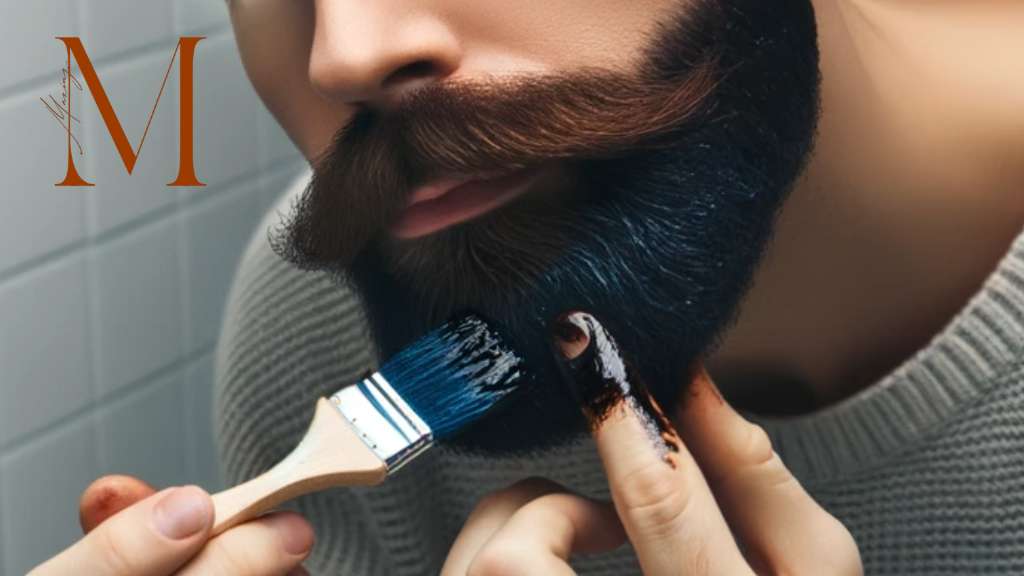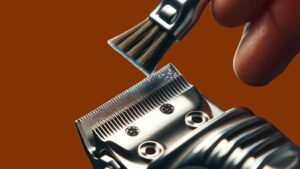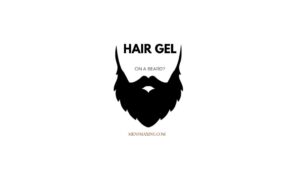
Hair Dye on a Beard: Good Idea or Not?
Many funny questions come to your mind when looking to improve your beard. Now let’s talk about dying beard, and can you use a hair dye on your beard.
The answer is no. Like you can’t use hair gel on beard, you can’t also use hair dye on your beard because of the ingredients hair dye contains that are harsh to your skin. Don’t get me wrong, you CAN DYE YOUR BEARD but with a product that is perfectly designed for facial hair. Now let’s explain what you should know about beard dying and why you should NOT consider using hair dye as a solution.
Why You Should Not Use Hair Dye On Your Beard

Ingredients are Bad for your Skin
Facial skin is much more sensitive than the skin on a scalp, and hair products contain ingredients that are harsh for your skin and can cause many problems, especially in a hair dye.
Hair dye contains ingredients that are bad for your skin like para-phenylenediamine (PPD), ammonia, peroxide, and resorcinol. These ingredients will cause nightmares for your skin like itching, redness, swelling, and blisters. If you ever experience skin issues like this, you know how hard it is to recover, especially with a beard over it.
A Uniform Shade is Hard To Achieve
The biggest challenge when dyeing a beard is achieving a uniform shade, which is impossible when using hair dye because the SCALP HAIR AND FACIAL HAIR ARE NOT THE SAME!
The beard is much rougher and tougher when going through with the hair on the head, which tells you that using hair dye will not give you the same results as the color on the package.
Hair dyes, which are typically formulated for smoother strands of the scalp, may not adhere to or penetrate the beard as effectively.
The Difference Between Hair Dye And Beard Dye
Okay, think of it like this: You know how some markers are made for drawing on paper and others for thicker materials like cardboard? Hair dye is like the marker for paper—it’s made for the thinner hair on our heads.
Beard dye, on the other hand, is for the rougher, thicker hair on our faces. And just like some markers have cooler colors, beard dyes come in more shades to match the hair on your head. Plus, beard dyes use softer stuff, kind of like natural colors from plants, to be kinder to face hair.
Though beard dyes tend to be more natural, they can still have irritants like PPD, so make sure to always do a patch test before using any dye, as recommended in product instructions.
The Difference Between a Beard and Scalp Hair
Beard hair is usually rougher and curlier than scalp hair. It grows faster but doesn’t get as long. The hair roots for beards are more oval, making them curly, while head hair can be in different shapes.
Faces have more oil glands than scalps, so beards can get oily quickly but also feel dry due to their rough texture. Some men have patchy beards while others have full ones, and this is because of genes and hormones.
Interestingly, a man’s beard can be a different color than his scalp hair. Male hormones like testosterone affect beard growth more than head hair, which is why boys get facial hair during puberty. However, these same hormones can make head hair thin out. Both beard and scalp hair go through growth and shedding, but at different rates.
How to Choose a Beard Dye Color

Age Factor
If you’re trying to cover grays but still want a natural look, consider choosing a color that’s a shade lighter than your natural color. This can give a salt-and-pepper effect, which can look distinguished without being a drastic change.
For Contrast Looks
| Hair Color | Beard Dye Color |
|---|---|
| Black | Light Brown or Gray |
| Brown | Blonde or Auburn |
| Blonde | Dark Brown or Black |
| Auburn/Red | Dark Brown or Blonde |
| Gray | Black Or Dark Brown |
These are only suggestions for contrasting looks; the best choice depends on your skin tone and what look you are trying to achieve. If you are looking for inspiration, the best option is Pinterest. You can find many images of guys in different combinations that look great.
Frequently Asked Questions
Typically, a permanent beard dye can last 3-4 weeks, but it varies depending on the product, beard growth rate, and washing frequency. Semi-permanent dyes fade faster, usually within a week or so.
There’s a possibility, especially if left on for too long. To minimize staining, apply petroleum jelly on the skin around the beard before dyeing and quickly wipe off any stray dye.
It depends on your personal preference and beard growth rate. Typically, touch-ups are needed every 3-4 weeks for permanent dyes and more frequently for semi-permanent dyes.
Yes, henna and indigo are natural alternatives that can be used on beards. They are less likely to cause irritation but might offer a more limited range of shades.
This is a little bit tricky, if the color is too dark, washing the beard with a clarifying shampoo might help fade it. For other color issues, you should visit a professional or wait for the color to fade before trying a different shade. If any of these options fail, the only thing left is a clean shave.
Conclusion
Using regular hair dye on your beard is not advisable. The skin on your face is more sensitive than your scalp, and hair dyes contain harsh ingredients like PPD, ammonia, and resorcinol that can cause skin issues such as redness and blisters. Moreover, achieving an even color with hair dye on a beard is challenging because beard hair is coarser and behaves differently than scalp hair. Always stay away from the products that are meant for a scalp hair.
If you are serious about beard dying, always go for a product that is meant for facial hair!


